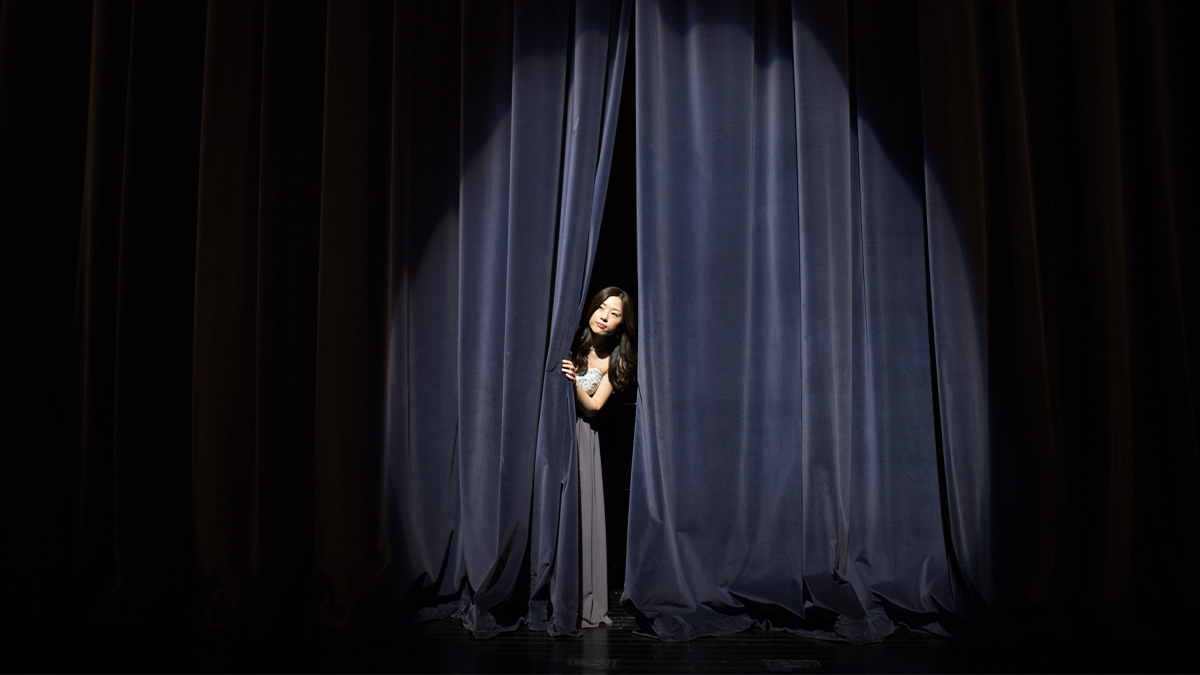Don’t Focus on the Most Expressive Face in the Audience
by Amit Goldenberg and Erika Weisz

Imagine yourself pitching an idea to a group of people. As you speak, you quickly scan the audience, your attention jumping from face to face. Are people smiling? Or do they look confused, bored, maybe even angry?
想象一下你自己在向一群人宣传某种想法。当你说话的时候,你快速地扫视听众,你的注意力从一张脸跳到另一张脸。人们是否在笑?还是看起来很困惑、很无聊,甚至是怒气冲冲?
Facial expressions impart vital clues about people's emotions. Whether you're a junior employee or a C-suite executive, making these split-second judgments about how your audience is feeling is a critically important skill. But even the most emotionally intelligent among us can struggle to understand exactly how these split-second judgments are made, and more importantly, whether or not they are accurate. And this becomes even more complicated when you start trying to read social cues not just in a single person, but in a group of people.
面部表情可以透露人们情绪方面的重要线索。无论你是初级员工还是最高层管理者,对你听众的感受做出这些瞬间判断是一项至关重要的技能。可是,即便是我们之中情商最高的人,也难以确切明白这些瞬间判断是如何做出的,更重要的是,这些判断是否准确。而当你开始尝试不只是在一个人身上,而是在一群人身上解读社交线索时,情况就愈加复杂了。
Research shows that when looking at a group, people tend to focus on faces expressing stronger emotions — whether those emotions are positive or negative — and pay less attention to faces conveying less intense emotions. In the context of public speaking, this attentional bias can shape speakers’ impressions of how they’re being received: since people pay more attention to their more-emotionally-expressive audience members, they tend to conclude that an audience’s overall reaction is more intense than it actually is.
研究表明,当人们在注视一群人时,更倾向于关注表达强烈情绪的面孔——无论这些情绪是正面的是还是负面的——而不太注意表达较少情绪的面孔。在公共演讲的背景下,这种注意力偏差可能会影响到演讲者对自己受欢迎程度的印象:既然人们更留意情感表现力更丰富的听众,他们通常会得出的结论是,听众的整体反应比实际情况更强烈。
To better understand how these biases present (as well as how you can start to overcome them), we — together with our colleagues Timothy Sweeny, Mina Cikara and James Gross — conducted a series of studies exploring this tendency to amplify groups’ emotions. In one experiment, participants were shown images of groups of up to 12 people. The faces in the images were calibrated to each display a certain amount of emotionality, enabling us to calculate the “objective” average emotional state of group. We then asked the participants to estimate the groups’ average emotional state and compared their responses to the actual levels of emotion depicted in each image.
为了更好地理解这些偏差如何呈现(以及你如何克服),我们与同事蒂莫西·斯威尼(Timothy Sweeny)、米娜·契卡拉(Mina Cikara)和詹姆斯·格罗斯(James Gross)一道进行了一系列研究,探究这种放大群体情绪的倾向。在一项实验中,参与者被展示了最多12人一组的图像,图像中的面孔都被进行了校正,以使每张面孔都显示出一定程度的情绪,这样我们能够计算群体“客观的”平均情绪状态。然后,我们要求参与者估计各组的平均情绪状态,并将他们的回应与每张图像描绘的实际情绪水平进行比较。
As expected, we found that participants consistently overestimated the emotionality of the groups. But we also found two interesting new results:
正如所料,我们发现,参与者自始至终都高估了群体情绪。不过,我们还发现了两个有趣的新结果:
First, the larger the group, the more our participants overestimated its emotional state. Because the degree of emotionality was randomly distributed among the faces (just like real-world groups will have a random distribution of more and less emotionally expressive people), larger groups had a greater likelihood of containing highly emotional faces than smaller groups did. And since peoples’ attention tends to get stuck on those highly emotional faces, they ended up rating the larger groups as more emotional on average.
首先,群体越大,我们的参与者越高估其情绪状态。由于情绪的程度是在面孔中随机分布的(就像情绪表现力更强与更弱的人会随机分布在真实世界里一样),较大群体比较小群体更有可能包含高度情绪化的面孔。由于人们的注意力通常停留在那些高度情绪化的面孔上,平均而言,他们最终认定较大群体更为情绪化。
Second, participants'overestimation of groups' emotions was slightly greater for negative expressions, such as anger, than it was for positive expressions, such as happiness. Prior research suggests that people's attention is naturally drawn more to faces expressing negative emotions than to faces conveying positive ones, but our study found that this effect holds for groups as well as for individuals. People's ability to judge a group's emotional state isn't just skewed towards more intense emotions — it is specifically biased toward more negative evaluations.
第二,在参与者对群体情绪的高估中,对消极表情(如愤怒)的高估略多于积极表情(如快乐)。之前的研究表明,人们的注意力自然会更多地被表达负面情绪的面孔所吸引,而不是被表达正面情绪的面孔所吸引。可是,我们的研究发现,这种效应不仅适用于个人,还适用于群体。人们判断一个群体情绪状态的能力不仅仅偏向更强烈的情绪——它还特别偏向于更负面的评估。
To further understand the mechanics of this tendency to overestimate groups’ emotions, we conducted a second study in which we asked participants to evaluate a group’s emotions while tracking their gaze with an eye-tracking apparatus. We found that as participants scanned an image of a group, their gaze would consistently get stuck on more emotional faces, leading them to overweight those faces when estimating the group's average emotional state.
为了进一步了解这种高估群体情绪倾向的机制,我们进行了第二项研究,其间我们要求参与者评估一组人的情绪,同时用眼球追踪装置追踪他们的目光。我们发现,参与者在扫视一组图像时,目光始终停留在更情绪化的面孔上,这导致他们在估计该群体的平均情绪状态时会过于加大这些面孔的权重。
Our research is early and we want to be careful in prescribing takeaways. But interestingly, this latter finding points to a potential remedy for the bias towards overestimating groups’ emotions: Because focusing on emotional faces tends to overly amplify our perceptions of a group’s emotionality, intentionally scanning more evenly across both emotional and non-emotional faces may lead to a more accurate perception of your audience. We also suspect that the tendency to amplify strong emotional responses may be especially salient in virtual contexts, since you may be even more likely to miss weaker emotional signals on a screen than in person (thought this is a speculation that would require further research to confirm).
我们的研究尚在初期。我们希望小心谨慎地给予人启示。但有趣的是,后一项发现为高估群体情绪偏差琢磨出了一个潜在解决办法:由于关注情绪化面孔通常会过度放大我们对一个群体情绪的感知,所以有意更均匀地扫视情绪化和非情绪化的面孔,可以让你更准确地感知听众。我们还怀疑,放大强烈情绪反应的倾向在虚拟环境中可能尤为突出,因为和面对面的情形相比,你更有可能错过屏幕上较弱的情绪信号(这只是一种推测,需要进一步的研究来证实)。
So next time you pitch an idea, give a talk, or even just enter a room and start getting a sense of the atmosphere, try actively looking at everyone, rather than letting your focus get drawn to just one or two highly emotional faces. While it won’t completely eradicate your natural attention biases, it should leave you with a more accurate estimation of how your audience really feels.
所以,下一次你宣传某种想法、作报告或者只是进入一个房间并开始感受气氛的时候,试着主动地审视每个人,而不是让你的注意力只被一两张高度情绪化的面孔所吸引。虽然这不能完全消除你的自然注意力偏差,但它应该会让你对听众的真实感受有更准确的估计。
阿米特·戈登堡是哈佛商学院(Harvard Business School)谈判组织与市场部(NegotiationOrganizations & Markets)的助理教授。戈登堡博士的研究重点是情绪在社交互动中的角色。
埃丽卡·魏斯是哈佛大学(Harvard University)的心理学博士后研究员。她于2018年获得了斯坦福大学(Stanford University)心理学博士学位。她的研究探寻的是如何利用社会心理学技术来鼓励人们相互产生共情。
刘隽 | 编辑




